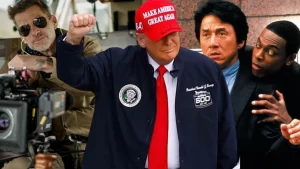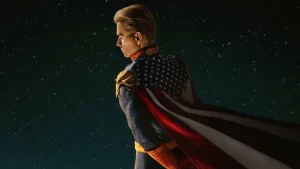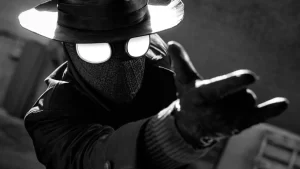There and Back; Again and Again…
A Film Review of The Hobbit: The Desolation of Smaug
By: Lawrence Napoli
[[wysiwyg_imageupload:12887:]]
The Lord of the Rings prequel films continue to expand and evolve in grandiose fashion thanks to Peter Jackson’s next chapter in his adaptation of The Hobbit. Unfortunately, by the end of this film I had a much deeper awareness (or rather, loathing) for this prequel’s “expansive” nature due to the fact that this film shows the audience more of the same types of traveling, battling and CG generated sequences that we’ve come accustomed to for four films now. Mind you, this is not a criticism of the extremely high proficiency with which this film was shot, performed in and presented thanks to the miracle of digital effects. I was simply bored with the story overall. Every minute that passed in the theatre’s relatively uncomfortable seats solidified my lower posterior cell by cell. By the end credits I was convinced this was the longest LotR film by far (which is incorrect as that distinction goes to The Return of the King with a whopping 201 minute run time).
The “magic” of these Hobbit films seems to be getting lost due to the fatigue of LotR familiarity and an effort to “fill minutes” with scenes rather than using them to build the plot with a series of moments that actually matter towards some climactic end. Yes, yes, Peter Jackson will be the first to state that his Tolkien adaptations are really meant to be seen together: back to back to back. To that I say: “Very well! Bring me to this 9 hour, cinematic marathon!” Oh wait, such an event would never occur under the current theatre system because they would barely squeeze two screenings in a day and more screenings means more money which is what makes the Hollywood World go ‘round. Long story short: Peter Jackson is allowed his artistic preferences as an exceptional filmmaker, but these Hobbit adaptations are nowhere close to the self-contained nuggets of dramatic fantasy tales represented by his own Lord of the Rings Trilogy: The Fellowship of the Ring, The Two Towers and The Return of the King.
There is a bit of a writing faux pas to initially explain why this second Hobbit film in particular misses. First of all, Bilbo Baggins (The Hobbit) really isn’t the main character here. In fact, there are several gaps in this film where he is all but forgotten. I understand that the Dwarven expedition to reclaim their home isn’t really his quest, but all of these LotR stories are about being mindful of the smaller things in life that may in fact be more powerful and important than larger ideas and conflicts that regularly consume our attention. Plus, it’s also a neat perspective on the hero’s journey to experience it through the eyes of a weaker character (despite his discovery of a unique power). The Desolation of Smaug is Thorin’s (the leader and most powerful of the Dwarves) journey with some timely aid of a Hobbit on the side. Second is the inflated importance and screen presence of Orlando Bloom’s Legolas. Don’t get me wrong, I like his character in addition to the way Bloom plays it, but his role does not advance the plot of the main characters in any way and should therefore not exceed that of a cameo appearance, much like Saruman and Galadriel in the first Hobbit. I suspect his featured status in The Hobbit: Part 2 of 3 is only to infuse some much needed action and combat-acrobatics that Dwarves, Hobbits and Half-lings of all sorts are apparently not capable of here. Third, the titular character “Smaug” and the scenes that feature him are absolutely captivating and masterfully played by Martin Freeman as Bilbo and the disembodied voice of Benedict Cumberbatch. The problem is the audience has to wait almost two hours to get to that part.
Ultimately, the weakness of The Hobbit Trilogy thus far boils down to lacking some serious charm and development when it comes to character. A group of heroes going on a journey against great odds must have moments onscreen when individuals identify themselves which endears them to the audience. Bilbo (an excellent main character) is a recovering optimist seeking to fit in and goes one on one with a dragon and he is completely absent from half of this film. Gandalf is the same crotchety old wizard with a tendency to leave the group the first chance he gets in order to get his butt kicked, and the audience is not surprised by any of this because we’ve seen it play out in exactly the same way as in every other LotR film. Thorin is the angry Dwarf would-be king who’s too mightier-than-thou to have Aragorn’s (Viggo Mortensen) roguish charm but is portrayed in these prequels as the substitute for that exact character type. And the rest of the group is comprised of supporting character #1, supporting character #2, etc. As a collective, our heroes are simply not as interesting as Harry Potter’s classmates, as iconic as The Rebel Alliance or as diverse as the original Fellowship, and there’s no excuse for that seeing how Peter Jackson has three whole feature length films to get an audience to invest in these guys. An attempt was made in this film to explore a subplot between Kili (Aidan Turner) and Tauriel (Evangeline Lilly), but that was literally two scenes, and apparently they are now totally in love forever.
The Desolation of Smaugis a very beautiful film to look at. Once again, there are plenty of breathtaking landscapes (both natural and digital) to gaze at. Elvin combat is an exquisite ballet that defies the laws of gravity and is masterfully captured by a series of tracking shots during the river sequence. Sauron (The Eye) reveals itself for the first time to Gandalf in an extremely terrifying way that gives some very interesting visual context as to what composes the iris. Pro tip: The audience has never seen this detail in the original trilogy. And of course there’s Smaug himself: who redefines what it means to depict such a mythical beast in cinematic reality. The scale and detail of his enormity is matched only by his equally grand lair of shimmering gold and the menacingly seductive nature of his voice (thank you Mr. Cumberbatch). The union of LotR and Peter Jackson has never failed to deliver the visual eye candy.
Performances by the cast are solid and are defined by their consistency, but no one stands out, steals scenes or delivers something truly memorable. The exception is that the digital characters in this entire mythology are some of the best Hollywood magic has produced, and they tend to upstage their fully human costars in the LotR films. I suppose I should not be too disappointed in the lack of a marquee human performance because the deck of characters is somewhat stacked against them. Men and women of Middle Earth are reflections of British history from kings and nobles to peasants and pond scum. Elves are hyper pretty people and Dwarves are ugly and stumpy. How do any of these compare to a winged, fire-breathing calamity that’s as big as a building who’ll only give you the time of day so long as you shower him with compliments? Ian McKellen, Martin Freeman, Richard Armitage and the rest are all fine actors, but they are mostly British people performing like British people – not exactly reinventing the wheel.
The Desolation of Smaug is a fine fantasy/adventure film that boasts much more intelligence than casual Hollywood drivel and is certainly a nice treat for the family during the holidays. I don’t recommend this for anyone looking for more than some light fantasy fun. This film is not a new benchmark that redefines Tolkien’s fantasy turned reality. Chances are, you’ve seen and heard much of what’s contained within this film before, and if it were to go head to head with a comparable blockbuster such as a major comic book character film, Star Wars or even a Fast and Furious sequel, my feeling is that it would lose ticket sales to that competition (which is why we never see these films go head to head in the first place). In one way (and one way only), I’m glad that The Hobbit Trilogy isn’t fleshing out the way its predecessor did because it puts the “multiple film per book adaptation” argument to rest. I don’t care how many details and subplots were snubbed from any single LotR movie. How much more did the audience need to fully understand those stories? I don’t feel overburdened by the exposition that drags out in these Hobbit prequels; I’m disinterested in it. There’s too much bland gobbledygook to wade through to get to the good stuff in the story. The art of adaptation is breaking fiction down intellectually and building it back up with the concept of efficiency in mind to visually present a story that ebbs and flows while not losing an audience’s interest.
Sure, it’s nice to have more of popular license “X” on the big screen, but we don’t need more than one Spider-Man punching Green Goblin in the face movie to understand teenage super-heroism, power and responsibility and father-son/hero-villain dynamics. Another movie can see him fight someone else for another reason that explores a different side to his character (or every other villain to explore every aspect of his character at the same time for The Amazing Spider-Man 2). Unfortunately, the whole film adaptation: “Part 1 of X, Part 2 of X, etc.” movement has done nothing but gain steam. Harry Potter did it, Twilight did it and Hunger Games is going to do it. Will this mean less concise filmmaking in the future? Yes. Will this frenzy fanboys and alienate everyone else? Maybe. Will this yield more money for the Hollywood machine? Absolutely! Well in that case, all is forgiven. Hopefully Bryan Singer has his writing team diligently at work on X-Men: Days of Future Past Part 2 of 10 right now just to keep the ball rolling.







